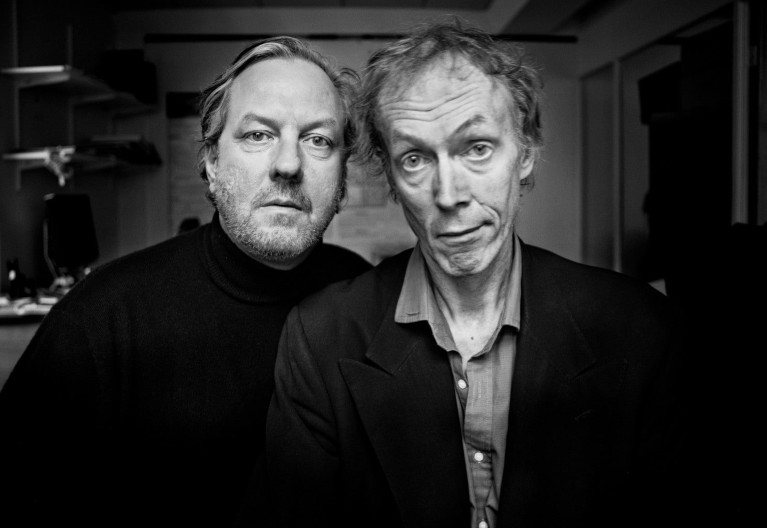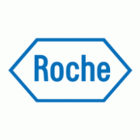Roche’s drive to develop treatments for HD is inspired by the people whose lives are affected by this progressive and fatal inherited disease. Listening to and partnering with patients, family members and advocacy organizations helps us better understand the impact and challenges of the disease for the entire community living with HD. To this end, we invited the Emmy award-winning journalist and HD patient advocate Charles Sabine to speak at an internal Roche event for World Rare Disease Day in February 2018. His powerful story about his journey with HD captivated the audience of more than 350 people.
We devote this sponsor’s advertorial to Charles’ story and his passionate dedication to driving change for the families impacted by HD around the world.

Charles Sabine with his elder brother John (right) in 2010. Like John, Charles inherited an HTT gene with a CAG-repeat expansion from his father and will also develop Huntington’s diseaseCredit: Martin Solyst.
Charles' story
Nearly 25 years ago, Charles’ father was one of the first people in the world to be genetically tested for HD, following identification of the causative CAG-repeat expansion in HTT in 1993. Charles was told that his father was suffering from an incurable, untreatable genetic disease, and that he himself would have a 50/50 chance of developing the disease as well, most likely in the next 10–15 years.
For Charles’ father, worse than death and the lack of any established standard of care was the loss of dignity that came as the once-proud career soldier watched his friends and family wince while his body and mind became unrecognizable. Worse still was the knowledge that he could have passed that nightmare on to his sons. Charles’ elder brother, John, studied law at the University of Oxford and went on to be described by a high-court judge as “one of the most brilliant barristers of his generation”. Because of the progression of HD, John is no longer able to work and currently requires 24-hour medical care and assistance. Charles discovered in 2006 that he also has the causative CAG-repeat expansion in HTT, meaning that the disease that took his father and is inflicting the same terrible decline on his brother will take him too. His neurologist told him that there was nothing he could do other than to live his life as well as he can. Not an hour went by when Charles did not picture how his quality of life would drain away, or when he did not fear that, however much his friends might promise they would always come and see him, they would not really want to – just as he did not want to see his father when he lost his ability to converse with his family.
Two years after his test, Charles swapped his 26-year career as a television war correspondent on the battlefield for working as an HD advocate to fight against the shame, ignorance, misunderstanding and lack of hope encountered by families living with HD.
His work with researchers, clinicians, students, patients, families, carers, pharmaceutical companies, politicians and charities has taught him that, contrary to the original pessimistic advice of his neurologist, there is much that he can do to battle HD. The problem is finding time to do it all.
One stirring example of Charles’ empowered action was the ‘HDdennomore’ campaign event on 18 May 2017, co-organized by Charles and the social non-profit group Factor H. The campaign found a way to bring HD out of the shadows by convening Catholic families from the remotest and poorest parts of South America at the Vatican to meet their Pope, some leaving their villages for the first time. The Pope’s physical embrace of people with HD and their families on that day was met with overwhelming emotion and gratitude as he became the first world leader to recognize the plight of people living with and affected by this heavily stigmatized disease.
Charles is one of the many people who have volunteered to further the scientific understanding of HD through participation in clinical trials. He completed the TRACK-HD observational study that confirmed the value of neurofilament light chain as a blood-borne biomarker of progressive neuronal damage in HD and other neurodegenerative disorders1. Charles also participated in HDClarity, an international study2 of cerebrospinal fluid collection, which aimed to facilitate development of therapies for HD.


 Huntington's disease Outlook
Huntington's disease Outlook